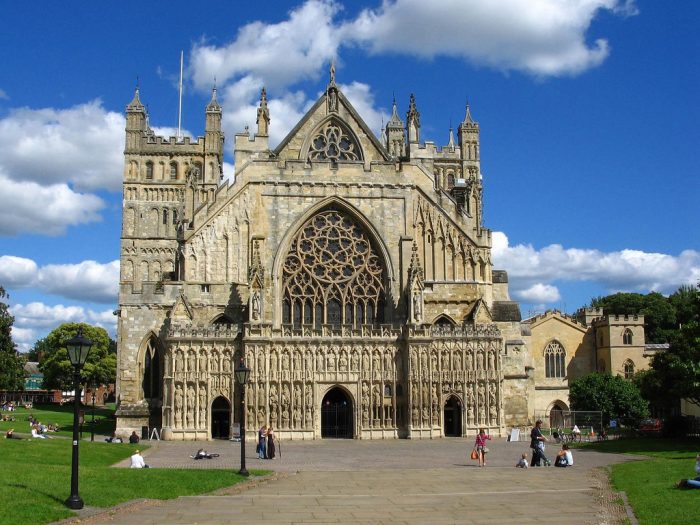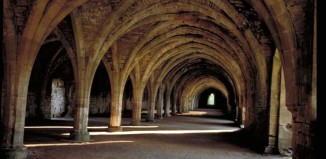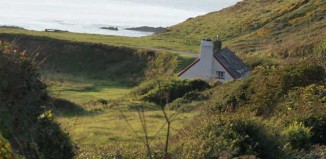History of Exeter
Exeter is Devon’s thriving capital city, owing its status to a number of bureaucratic factors and to its Norman cathedral, which features prominently in a Close of beautifully preserved buildings
Words: Vicky Sartain
This is where visitors, students and workers alike congregate in the summer to picnic on the cathedral green or dine at one of the surrounding cafes, with the cathedral the focal point. Visible layers of history can be found inside from its origins as a Norman Cathedral, through medieval years of restoration when it was decorated in Gothic style. The same can be said of the development of the city from Roman times. The Roman army established a fortress here around AD50 and remained here for about 20 years. The city then became known as Isca Dumnoniorum and was an important Romano- British settlement. Possibly Exeter’s most important relic is the city wall, built around AD200. When the Romans abandoned Isca, the Saxons re-established life there, restoring the crumbling wall with their own chosen layer of stone. Today about 70 per cent of this 3km wall remains intact and at almost 2,000 years of age it has protected the central population from centuries of rebellion and all out war.
The only way in and out of Isca was through one of its four gates, the most impressive of which was the South Gate, near the cathedral. In the north east corner of the city wall lie the remains of a Norman castle. The Gatehouse, built soon after William the conqueror’s visit to Exeter in 1068, still stands. It represents how critical defensive measures were to the growing town, long after the Roman age. At the newly refurbished Royal Albert Memorial Museum & Art Gallery in Queen Street, precious Roman items unearthed during excavations in the 1970s are on display. Among them are mosaic fragments, coins, sculpture and pottery, but the biggest surprise for archaeologists was the discovery of a Roman bath house in the cathedral grounds. For the time being this remains a buried treasure pending further discussion about its future as a possible visitor attraction.
Life in the city would prosper in medieval times as Exeter became an administrative, economic and ecclesiastical centre (with a staggering 32 parish churches plus monastic buildings). A self-guided medieval trail leaflet available from the Visitor Information Centre notes eight highlights across the city. Among them is Southernhay, a desirable address today and the site of the Lammas Fair harvest festival, an event still celebrated with the pageantry of old. Wynard’s Almhouses on nearby Magdalene Street shows the other face of life in the city, where a small number of sick and elderly found refuge in the 1400s, the lucky few sheltered by generous benefactor William Wynard. The Middle Ages also saw developments in engineering, when an underground passageway system was built beneath the streets to support a piped fresh water supply from outlying springs into the city. These passages are now a tourist attraction, accessible from Paris Street. A subterranean haunt of another kind can be visited at St Bartholomews Cemetery. Built from 1835-7 in the Egyptian style, the catacombs appeared to be a grand addition to the city’s chock-a-block burial grounds, but in reality it was a failure owing to building problems and conflicting views of its planners. On a guided tour, available from April to October, visitors will see the rather eerie remains of this graveyard.
Devon’s wealth was made during the 16th and 17th centuries on the back of the woollen cloth trade. From 1680 Exeter enjoyed a century of prosperity, and became renowned as a centre of fashion and elegance as well as trade. Smart new developments replaced crumbling buildings and architecture was on a par with that found in Bath, Bristol and London. The quayside, which is now a picturesque spot on the river Exe, became the hub of activity for merchants, whose goods were loaded onto waiting ships ready for passage along the 16th-century built Exeter Canal en route for Europe. The onset of the Napoleonic Wars and dawn of the Industrial Revolution would close this chapter of the city’s industrial success but its legacy can still be seen. Tucker’s Hall on Fore Street was a base for members of the Clothworkers Guild since 1471. Its barrel vaulted ceiling and intricate carvings can be viewed year round.
The Guildhall in the High Street is the oldest municipal building still in regular use in England, where councillors and traders have gathered for over 800 years. Earliest records show that it was in operation in 1160, its impressive granite and Beer stone façade is a 16th-century addition. Surviving buildings close by were once inhabited by wealthy merchants. The buildings would have lined the street all the way to St Nicholas Priory, a must-see on the heritage trail. A former Benedictine priory, it was transformed following the Dissolution into an Elizabethan townhouse, and is presented as such today. Living History days bring the property to life, when costumed actors portray the lifestyle of the period in authentically restored surroundings. The heritage of Exeter is not always obvious – certainly much was lost in the reprisal Blitz of 1942, when the city was deliberately targeted in the wake of the RAF’s bombardment of medieval Lübeck. Occasionally it is necessary to scratch beneath the surface, or go off the beaten track to discover hidden gems. One of these is the 15th-century merchant’s house precariously balanced on West Street.
Known as the ‘House that Moved’ it was moved lock, stock and barrel on rollers from its original site on nearby Frog Street in an effort to save it from demolition during town planning. Elsewhere, the atmospheric Gandy Street is thought to have provided Exeter University graduate JK Rowling with the inspiration for Diagon Alley in her Harry Potter books. With acres of parks, miles of waterway and ancient streets to explore, this city in the countryside has it all.








